Alright, buckle up, folks! I’m usually for fast-paced shooters, RPGs and lewd visual novels, but I also got a soft spot for games with killer narratives that make you feel all the feels. We’re talking about those heavy-hitting visual novel-style games where you control the character and explore the world. “Life is Strange” is the perfect example of this, and if you want to create a game like it, you’re in the right place. Let’s break it down. But first…
Let’s talk about why you should play “Life is Strange”. Plus, there are some DLCs and special episodes that add even more depth to the already rich stories. Let’s dive into why you should play these bad boys and how to tackle them in the right order, including all the extras!
Life is Strange Game Writing Table of Contents (for your reference)
- Why Play a Game Like Life is Strange?
- How to Write like the Life is Strange Game
- How to Write a Prequel Game Like Life is Strange: Before the Storm
- How to Write a Spin-Off Game Like The Awesome Adventures of Captain Spirit
- How to Write a Sequel Like the Life is Strange 2 Game: Fresh Stories, New Characters, and Tying It All Together
- How to Write like the Life is Strange Game: True Colors
- A Personal Story about the Life is Strange Game
- Final Thoughts on Writing like the Life is Strange Game
Why Play a Game Like Life is Strange?
- Epic Storytelling: Each game and its DLCs offer a unique, gripping narrative that pulls you right in.
- Choice Matters: Your decisions truly shape the narrative, making each playthrough a unique journey.
- Relatable Characters: Deep, flawed, and totally immersive – these characters feel real.
- Killer Soundtracks: The tunes are just spot-on, enhancing those dramatic moments.
- Visuals and Atmosphere: Every scene is like a carefully crafted visual poem.
What is the Order of the Life is Strange Game and DLCs:
Here’s the best way to roll through the “Life is Strange” series, including all the key DLCs and special episodes for the fullest experience:
- Life is Strange: Before the Storm (2017) + Bonus Episode: ‘Farewell’
- Why First?: This prequel sets up Chloe and Rachel’s backstory. ‘Farewell’ acts as a nostalgic send-off, giving you deeper context and emotional ties.
- Pro Tip: Keep an eye on the dynamics between characters; it enriches your understanding of the main game.
- Life is Strange (2015)
- Why Second?: Now dive into Max’s story with time-rewinding powers, recognizing characters and references from ‘Before the Storm’.
- Pro Tip: Think about how your choices affect the past, present, and future!
- The Awesome Adventures of Captain Spirit (2018)
- Why Third?: This free chapter introduces new characters and settings that lead directly into the next main game.
- Pro Tip: It’s short but sweet, so savor the story and its connections.
- Life is Strange 2 (2018)
- Why Fourth?: Follow the journey of the Diaz brothers with callbacks to earlier games and decisions impacting this new narrative.
- Pro Tip: Embrace the change; this sequel’s depth comes from its fresh perspective.
- Life is Strange: True Colors (2021) + DLC: ‘Wavelengths’
- Why Last?: Alex Chen’s story uses new psychic empathy powers in a mystery-rich setting. ‘Wavelengths’ explores more backstories post-main game.
- Pro Tip: Engage fully with Alex’s power to experience the emotional depths of those around her.
- Life is Strange: Double Exposure (Upcoming, Release Date: October 29, 2024)
- Year It Takes Place: Unknown: Max returns, older and now a university resident photographer, diving into parallel universes to save her friend Safi. This might be the farthest forward in the timeline.
- Why Anticipate?: This newest addition opens fresh doors and possibilities in the series, promising to push the narrative boundaries even further.
Total Number of Life is Strange Games:
With “Double Exposure,” there will be six main entries in the “Life is Strange” universe. Remember, the original and “Before the Storm” are also available as a remastered collection, which might count as a single item on some platforms.
Life is Strange Ratings and Fan Thoughts:
- Life is Strange (2015): Heart-wrenching decisions and a memorable time-travel twist.
- Life is Strange: Before the Storm (2017): Provides compelling insights into Chloe’s life, enriching the lore.
- The Awesome Adventures of Captain Spirit (2018): A poignant glimpse into a child’s imagination with ties to the broader narrative.
- Life is Strange 2 (2018): A moving tale of brotherhood and the consequences of choice.
- Life is Strange: True Colors (2021): Praised for its emotional depth and innovative use of psychic abilities to unravel mysteries.
Now let’s get into the main point of this article…
How to write a game like Life is Strange?
How to Write like the Life is Strange Game
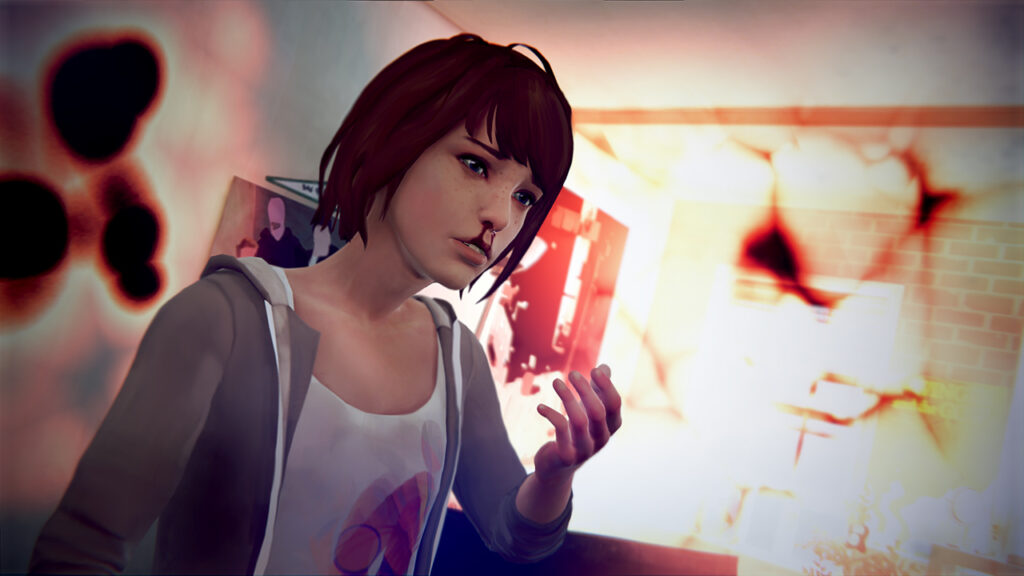
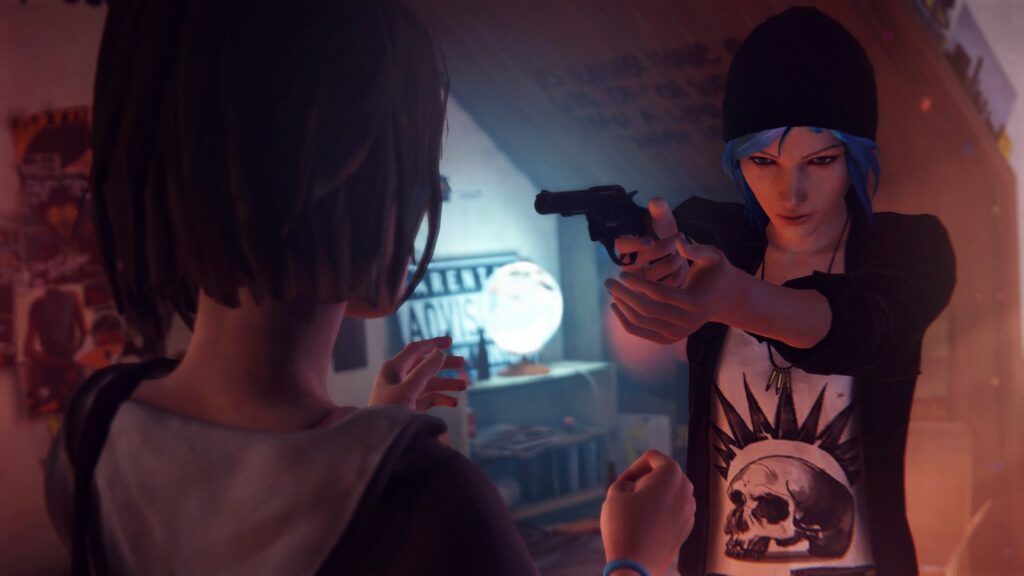
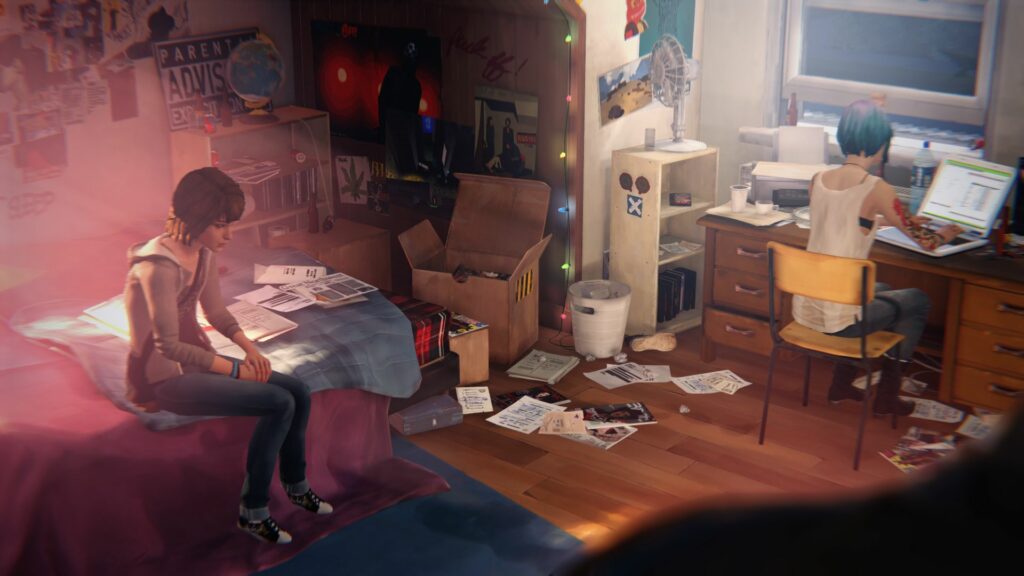
1. Developing a Strong Narrative for Life is Strange Game Writing
First things first, you need a story that hooks players from the start. “Life is Strange” nailed this by introducing Max Caulfield, a high school student with time-rewinding powers. Your game should have a unique twist that keeps players engaged.
Tip: Start with a “what if” scenario. What if your character could read minds? What if they were the only person who remembered the previous day? Get creative!
2. Creating Relatable Characters
Characters are the heart of your game. They need to be complex, flawed, and relatable. In “Life is Strange,” Max and Chloe’s friendship is central to the story. Their personalities, struggles, and growth make players care about them.
Tip: Flesh out your characters with detailed backstories. Give them strengths, weaknesses, dreams, and fears. Make them feel like real people.
3. Crafting Meaningful Choices
One of the coolest things about “Life is Strange” is how your choices affect the story. This adds replay value and makes each player’s experience unique.
Tip: Create branching storylines where decisions lead to different outcomes. Think of key moments where players must choose, and make those choices impactful.
4. Writing Natural Dialogue for Life is Strange Game Writing
Dialogue can make or break your game. It needs to feel natural and true to the characters. “Life is Strange” did a great job with this, capturing the way teens talk without being cringy.
Tip: Write dialogue that reflects your characters’ personalities and situations. Avoid clichés and keep it real. Practice writing conversations and read them out loud to see how they flow.
5. Building an Immersive World
Your game’s setting is just as important as the characters and story. “Life is Strange” has a beautifully detailed world, from the high school to the town of Arcadia Bay.
Tip: Create a world that players want to explore. Add small details that make the environment feel alive. Use visual storytelling to reveal more about the characters and plot.
6. Balancing Exploration and Story
“Life is Strange” balances narrative and exploration perfectly. Players control Max, exploring her environment and uncovering story elements.
Tip: Design your game to encourage exploration without detracting from the story. Use environmental storytelling to reveal backstory and character details through objects, scenery, and hidden areas.
7. Handling Sensitive Topics with Care when focusing on Life is Strange Game Writing
“Life is Strange” tackles heavy subjects like bullying, mental health, and loss. These topics need to be handled with sensitivity and respect.
Tip: Do your research and consult with experts if necessary. Approach sensitive topics thoughtfully, avoiding stereotypes and ensuring you represent them accurately.
Examples of What Works and What Doesn’t
What Works:
- Emotional Engagement: Games like “Life is Strange” succeed because they make players feel something. Emotional scenes, tough choices, and relatable characters draw players in.
- Visual and Audio Atmosphere: The game’s art style and soundtrack set the tone and mood. “Life is Strange” uses music to enhance emotional moments, making scenes more impactful.
- Character-Driven Plot: The story revolves around the characters’ personal journeys and relationships. Players get invested in their lives, making the narrative more compelling.
What Doesn’t Work:
- Forced Dialogue: If dialogue feels unnatural or out of character, it breaks immersion. Avoid overly dramatic lines that don’t fit the character’s personality.
- Predictable Plot Twists: Keep your story fresh with unexpected twists and turns. Avoid clichés that players can see coming a mile away.
- Shallow Characters: Flat, one-dimensional characters won’t engage players. Ensure every character, even minor ones, has depth and personality.
Writing Tips for a Game Like “Life is Strange”
- Show, Don’t Tell: Use actions, environment, and dialogue to reveal character traits and plot points instead of exposition. For example, instead of telling players Max is shy, show her hesitating to speak up in class.
- Pacing: Balance intense moments with slower, reflective scenes. This keeps the narrative engaging and gives players time to connect with the characters.
- Authenticity: Ensure your characters’ actions and dialogue are true to their personalities. Consistency is key to maintaining immersion.
- Revising: Writing a game script is an iterative process. Revise your work, get feedback from others, and don’t be afraid to make changes to improve the story.
Up next…
If you’re thinking about writing a prequel to an established story, you better be ready to fill some big shoes. “Life is Strange: Before the Storm” did it right by diving into the backstory of Chloe Price and Rachel Amber. Here’s how to write a prequel that does justice to the original while adding new goodies to the narrative.
Before you move on check out some adorable “Life is Strange” inspired stickers to decorate your laptop or desk with while writing your game!
How to Write a Prequel Game Like Life is Strange: Before the Storm

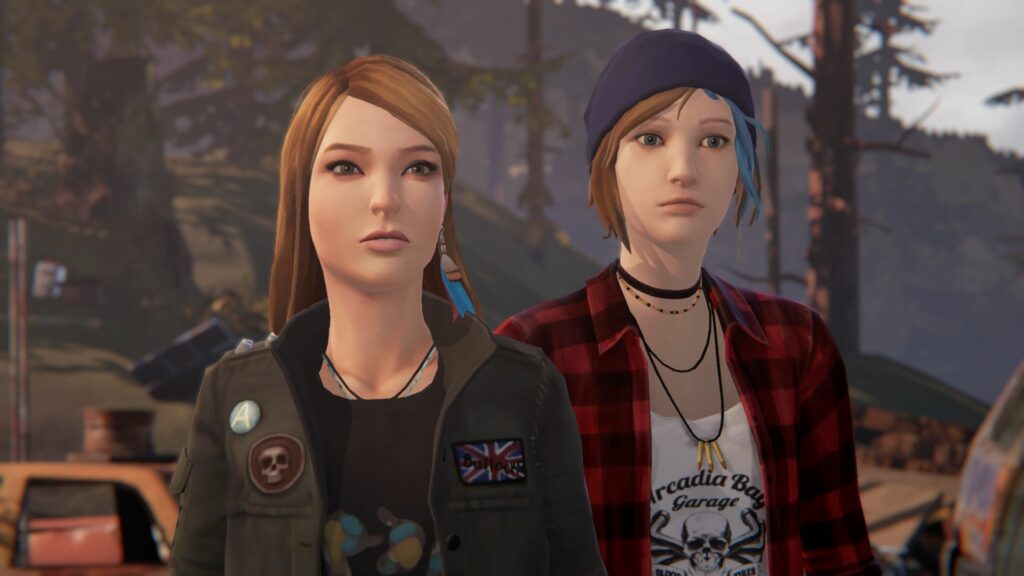
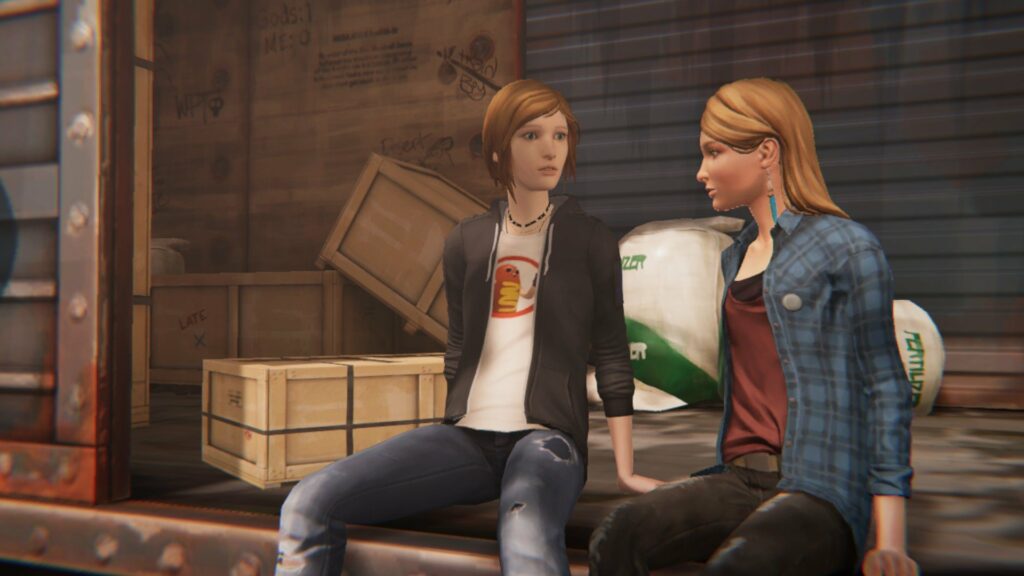
1. Understand the Original Material
Before you even start writing, you need to know the original story inside and out. “Life is Strange” introduced us to Chloe and Rachel, but “Before the Storm” gave us a deeper look into their lives.
Tip: Replay the original game, take notes, and identify key events and character traits that you need to expand upon. Pay attention to the relationships, dialogue, and unresolved questions.
2. Respect Established Canon
A prequel must stay true to the established lore while providing new insights. “Before the Storm” respects the original game’s events and character arcs, ensuring continuity.
Tip: Make a list of all major plot points and character details from the original game. Ensure your prequel aligns with these facts and doesn’t contradict them.
3. Develop Backstories
A prequel’s strength lies in fleshing out the backstories of beloved characters. “Before the Storm” delves into Chloe’s transformation from a regular teenager to the rebellious spirit we see in “Life is Strange.”
Tip: Create detailed backstories for your characters that explain their motivations, fears, and dreams. Show their growth and how they become the characters we know from the original.
4. Introduce New but Relevant Characters
While your prequel should focus on existing characters, introducing new characters can add depth. Rachel Amber, who was a mystery in the original game, becomes a central character in “Before the Storm.”
Tip: Introduce new characters who directly influence the main characters’ development. Ensure they feel integral to the story and not just added for the sake of novelty.
5. Create Meaningful Conflicts
Conflict drives narrative. “Before the Storm” introduces new conflicts and challenges for Chloe, making her journey compelling and relatable.
Tip: Develop conflicts that challenge your characters and reveal new facets of their personalities. Ensure these conflicts lead to growth and change, setting the stage for the original story.
6. Weave in Foreshadowing
A good prequel will hint at events in the original game. “Before the Storm” drops subtle hints about the future, enhancing the overall narrative.
Tip: Use foreshadowing to connect the prequel to the original. Drop hints and clues about future events that fans of the series will recognize and appreciate.
Examples of What Works and What Doesn’t
What Works:
- Character Depth: “Before the Storm” explores Chloe’s vulnerabilities and strengths, making her a more rounded character.
- New Perspectives: The game offers a fresh perspective on Rachel Amber, transforming her from a mysterious figure into a fully-fledged character.
- Emotional Resonance: The emotional journey of Chloe and Rachel is powerful and engaging, pulling players into their world.
What Doesn’t Work:
- Ignoring Established Facts: Any deviation from the established canon can break immersion. Stick to the facts and build around them.
- Overloading with New Characters: Introducing too many new characters can dilute the focus. Keep it tight and relevant.
- Predictable Storylines: Avoid clichés and predictable plots. Keep the narrative fresh and surprising.
Writing Tips for a Prequel Like Before the Storm
- Stay True to Character: Ensure your characters’ actions and dialogue are consistent with how they are portrayed in the original game.
- Highlight Growth: Show the evolution of characters. The Chloe in “Before the Storm” is different from the Chloe in “Life is Strange,” and that transformation should be evident.
- Balance Old and New: Mix familiar elements with new storylines. Fans want to see both recognizable aspects and new content.
- Focus on Relationships: Relationships drive much of the emotional impact. Explore and deepen these connections.
Examples
Dialogue: Make the dialogue feel natural and true to the characters’ ages and personalities. Chloe’s conversations should reflect her rebellious and hurt nature, while Rachel’s dialogue should show her enigmatic and complex personality.
Scene Setting: Use locations familiar to fans but explore them in new ways. For example, show the school from a different perspective or introduce new areas that add depth to the setting.
Handling Sensitive Topics
“Before the Storm” touches on sensitive subjects like grief, family conflict, and identity. These need to be handled with care to avoid trivializing them.
Tip: Approach sensitive topics with research and empathy. Consult experts if necessary and ensure you’re representing these issues accurately and respectfully.
And now…
If you’re thinking about writing a spin-off that’s minor but packs a punch, you gotta take notes from “The Awesome Adventures of Captain Spirit.” This game might seem small, but it’s a key teaser that bridges the gap between “Life is Strange” games and hints at what’s coming next. Here’s how to nail a spin-off that adds value and keeps fans hyped for future releases.
How to Write a Spin-Off Game Like The Awesome Adventures of Captain Spirit
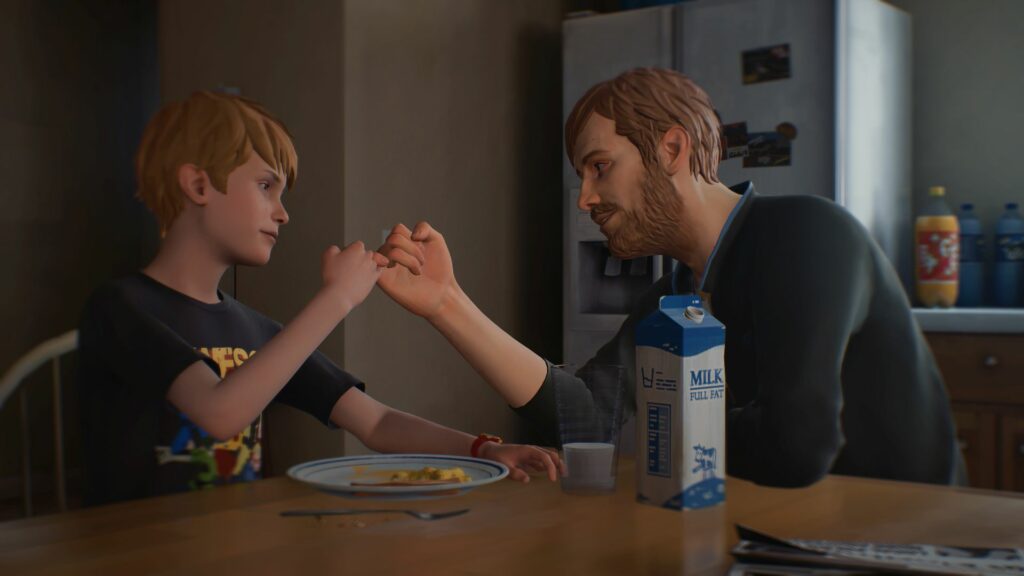


So if you’re also thinking about writing a spin-off that’s minor but packs a punch, you gotta take notes from “The Awesome Adventures of Captain Spirit.” This game might seem small, but it’s a key teaser that bridges the gap between “Life is Strange” games and hints at what’s coming next. Here’s how to nail a spin-off that adds value and keeps fans hyped for future releases.
1. Know Your Place in the Universe
A spin-off needs to fit snugly into the existing universe without overshadowing the main series. “Captain Spirit” does this by introducing new characters and a mini-adventure that hints at the larger narrative of “Life is Strange 2.”
Tip: Identify a minor character or subplot from your main series that has potential for a standalone story. This keeps the spin-off connected but distinct.
2. Create a Standalone Story
While your spin-off should tease future events, it must also stand on its own. “Captain Spirit” tells the story of Chris Eriksen, a young boy with a vivid imagination, dealing with his own set of challenges.
Tip: Craft a self-contained story that can be enjoyed without prior knowledge of the main series. Ensure it has a clear beginning, middle, and end.
3. Tease Future Content
One of the primary purposes of “Captain Spirit” is to tease “Life is Strange 2.” It introduces characters and themes that will be important later.
Tip: Drop subtle hints and Easter eggs about future games. These should be intriguing but not so obvious that they spoil upcoming plots.
4. Focus on Character and Emotion
“Captain Spirit” is all about the emotional journey of Chris and his relationship with his father. This focus on character depth and emotional resonance is crucial.
Tip: Develop your main character fully. Give them relatable struggles and dreams. The emotional core of your spin-off should be strong enough to carry the story.
5. Keep It Short and Sweet
A spin-off doesn’t need to be as long as a main game. “Captain Spirit” is a short, impactful experience that leaves players wanting more.
Tip: Aim for a concise narrative that delivers a powerful punch. Keep the gameplay focused and the story tight.
6. Engage with the Core Themes
“Captain Spirit” stays true to the themes of imagination, childhood, and family, which are central to the “Life is Strange” series.
Tip: Identify the core themes of your main series and weave them into your spin-off. This creates a cohesive experience for players.
Examples of What Works and What Doesn’t for Life is Strange Game Writing
What Works:
- Emotional Depth: “Captain Spirit” excels at creating an emotional connection with Chris and his situation.
- Subtle Teasing: The game hints at the larger story without giving too much away.
- Relatable Characters: Chris is a well-rounded character that players can root for.
What Doesn’t Work:
- Overloading Information: Giving away too much about future games can spoil the surprise.
- Ignoring Main Themes: Straying too far from the established themes can make the spin-off feel disconnected.
- Unresolved Storylines: Leaving too many loose ends can frustrate players.
Writing Tips for a Spin-Off Like Captain Spirit
- Keep It Grounded: Your spin-off should feel like a natural extension of the main series. Don’t introduce elements that are too far removed from what fans love.
- Focus on Character Moments: Use the smaller scale to dive deep into character moments and development.
- Use Visual and Audio Cues: “Captain Spirit” uses visual storytelling and music to set the mood and hint at larger themes. Incorporate these elements to enhance your narrative.
Examples
Dialogue: Chris’s conversations with his father are both heartwarming and heart-wrenching. Write dialogue that reveals character depth and builds emotional connections.
Scene Setting: The game takes place in a small, detailed environment that feels alive. Create settings that are rich in detail and contribute to the story.
Handling Minor but Important Details for Life is Strange Game Writing
Your spin-off should include details that seem minor but are actually significant for future games. In “Captain Spirit,” the small details about Chris’s life and his imaginative play hint at larger themes and events.
Tip: Scatter clues and details throughout your story that will be important later. These should be subtle enough that only keen-eyed players will catch them.
How to Write a Sequel Like the Life is Strange 2 Game: Fresh Stories, New Characters, and Tying It All Together
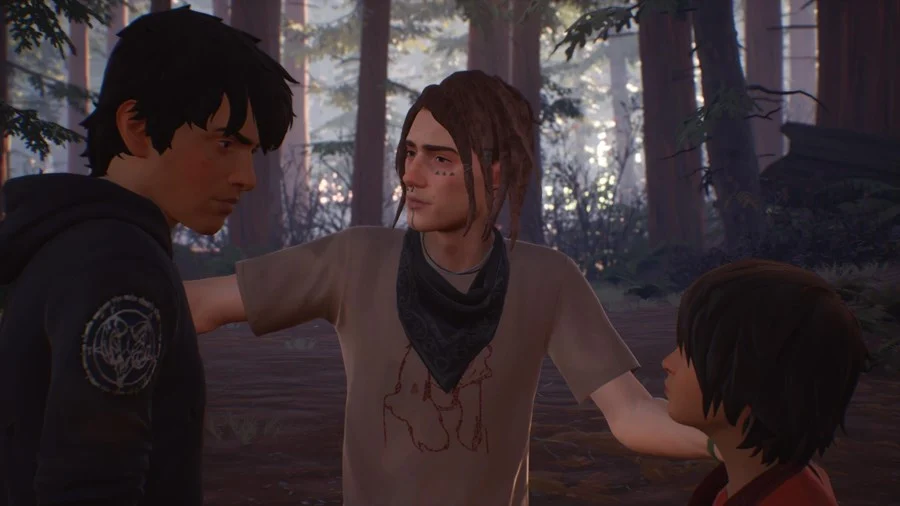

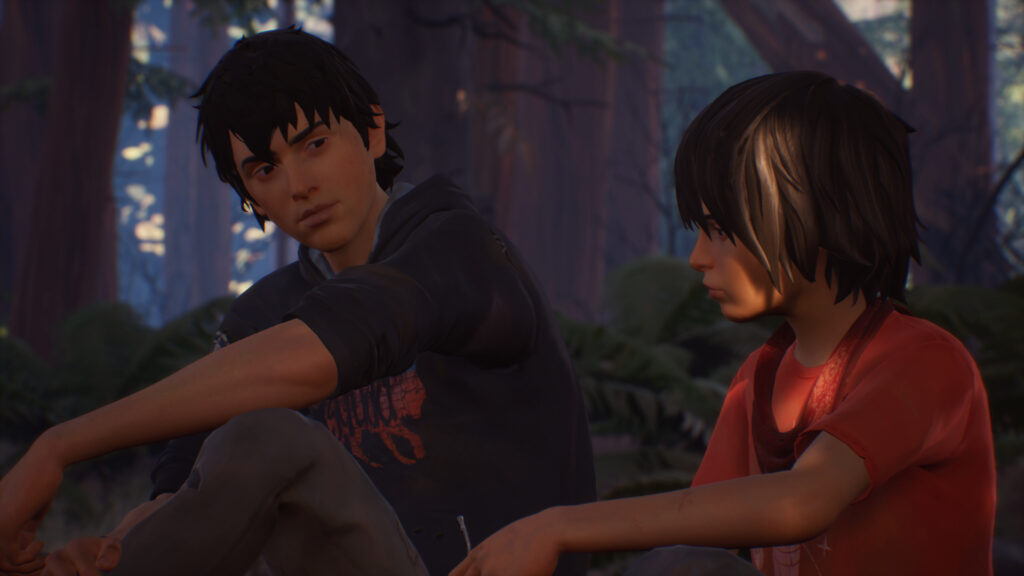
Alright, folks! If you’re thinking about writing a sequel that’s both fresh and tied to your main game, “Life is Strange 2” is a masterclass in how to do it right. This game introduces new characters and a completely new storyline while staying true to the spirit of the original series. Let’s break down how to craft a sequel that feels both new and familiar.
1. Create a Fresh Storyline
“Life is Strange 2” ditches the old characters and settings for a completely new story about brothers Sean and Daniel Diaz. This bold move paid off by bringing fresh perspectives and experiences to the series.
Tip: Start with a brand-new premise. Think about different scenarios, settings, and conflicts that haven’t been explored yet. Make sure your new story has its own unique hook.
2. Introduce New Characters
The heart of “Life is Strange 2” is the relationship between Sean and Daniel. These new characters bring fresh dynamics and challenges, giving the sequel its own identity.
Tip: Develop new characters that are just as deep and complex as those in the original game. Give them unique backgrounds, motivations, and arcs that drive the story forward.
3. Maintain Core Themes
Despite its new story and characters, “Life is Strange 2” stays true to the core themes of the series: family, identity, and the impact of choices.
Tip: Identify the core themes of your original game and weave them into the new story. This creates a sense of continuity and keeps fans engaged.
4. Connect to the Main Game
“Life is Strange 2” makes subtle connections to the original game without overshadowing its new story. These connections reward fans without confusing new players.
Tip: Include nods to the original game through Easter eggs, cameos, or references. These should be subtle enough that new players don’t feel lost but meaningful for long-time fans.
5. Explore New Mechanics
With “Life is Strange 2,” the developers introduced new gameplay mechanics, such as Daniel’s telekinetic powers and the dynamics of being a guardian to a younger brother.
Tip: Innovate with new mechanics that complement your story. These should enhance the gameplay experience and fit naturally within the narrative.
6. Tackle New Themes and Issues for Life is Strange Game Writing
“Life is Strange 2” dives into contemporary issues like immigration, racism, and the struggle for survival. These themes make the story relevant and impactful.
Tip: Address new themes and social issues that resonate with your audience. This adds depth and relevance to your story, making it more engaging.
Examples of What Works and What Doesn’t
What Works:
- Character Depth: Sean and Daniel are well-developed characters with a strong bond that drives the story.
- Fresh Perspective: The new storyline offers a fresh take while maintaining the essence of the series.
- Meaningful Choices: The decisions players make feel impactful and shape the narrative in significant ways.
What Doesn’t Work:
- Overloading with References: Too many references to the original game can alienate new players.
- Unrelated Themes: Introducing themes that don’t align with the core of the series can feel jarring.
- Shallow New Characters: New characters need to be as developed and engaging as those from the original game.
Writing Tips for a Sequel Like Life is Strange 2
- Develop Strong Characters: Focus on creating new characters that are as compelling as the originals. Their relationships and development should drive the narrative.
- Balance Old and New: Keep elements that fans love while introducing new concepts and mechanics. This keeps the game fresh without losing its identity.
- Focus on Story and Choices: Ensure that the story is engaging and that choices have real consequences. This keeps players invested and enhances replay value.
Examples
Dialogue: In “Life is Strange 2,” the dialogue between Sean and Daniel is natural and reflects their brotherly bond. Write dialogue that reveals character and drives the story forward.
Scene Setting: The game takes players across various settings, each rich in detail and atmosphere. Create diverse and immersive environments that enhance the narrative.
Handling New Themes
“Life is Strange 2” handles new themes like immigration and survival with sensitivity and depth. This makes the story more relatable and powerful.
Tip: Research thoroughly and approach new themes with care. Ensure that your representation is accurate and respectful.
Connecting to the Main Game
“Life is Strange 2” makes subtle connections to the original game, such as references to Max and Chloe. These connections are rewarding for fans but not essential for new players.
Tip: Use references and connections sparingly. They should enhance the experience for returning players without confusing newcomers.
How to Write like the Life is Strange Game: True Colors
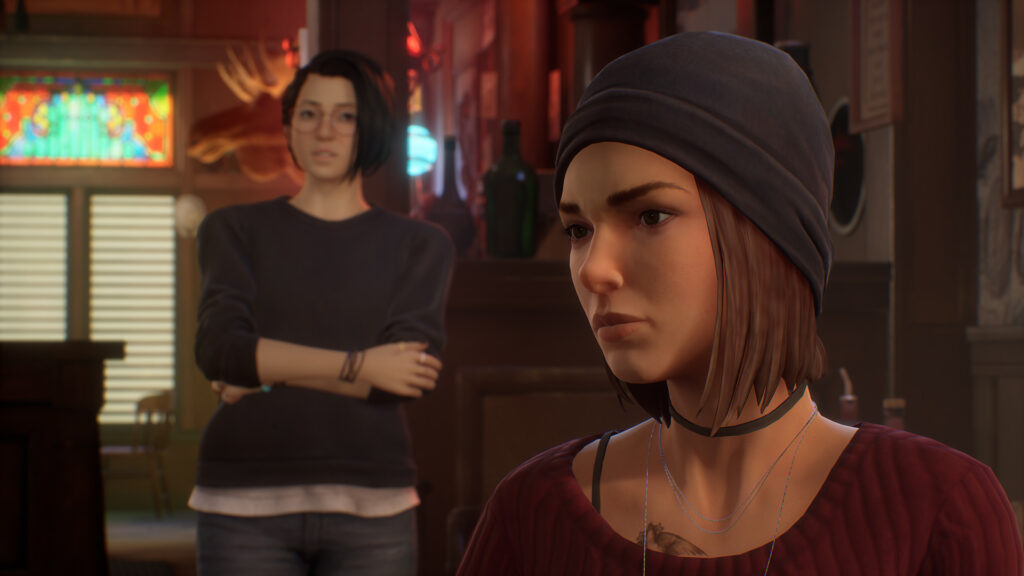


Let’s now talk about how to write a game like “Life is Strange: True Colors.” It’s all about the emotions in this one folks. Literally.
1. Nail the Emotional Core
“True Colors” revolves around Alex Chen, a character who can see and feel other people’s emotions. The emotional depth of the game is what makes it stand out.
Tip: Start with a strong emotional hook. What is the core emotional journey of your main character? Make sure it’s something players can connect with on a personal level.
2. Develop a Relatable Protagonist
Alex Chen is a character that players can easily connect with. She’s got her struggles, strengths, and a unique ability that makes her story intriguing.
Tip: Flesh out your protagonist. Give them a detailed backstory, distinct personality traits, and real-life struggles. Make sure they’re someone players can root for.
3. Unique Abilities with Narrative Impact
Alex’s ability to see and manipulate emotions isn’t just a gimmick—it’s central to the story and gameplay.
Tip: Create a unique ability for your character that ties into the narrative. This ability should be crucial to solving problems and advancing the story, not just a cool trick.
4. Build a Compelling Setting
“True Colors” is set in the picturesque town of Haven Springs. The setting is vibrant, detailed, and feels alive.
Tip: Design a setting that enhances your story. Make it visually appealing and full of small details that add to the narrative. Think about how the environment can reflect the emotional tone of the game.
5. Strong Supporting Cast
The characters in Haven Springs are well-developed and play significant roles in Alex’s journey.
Tip: Create a diverse cast of supporting characters with their own stories and personalities. Their interactions with the protagonist should drive the narrative forward and add depth to the world.
6. Choices that Matter
“True Colors” is all about making choices that affect the outcome of the story. Each decision can lead to different paths and endings.
Tip: Design meaningful choices that have real consequences. Make sure these choices affect the story in significant ways, encouraging players to think carefully about their decisions.
Examples of What Works and What Doesn’t
What Works:
- Emotional Depth: The game’s focus on emotions and relationships creates a powerful and engaging experience.
- Visually Stunning: The vibrant, detailed setting of Haven Springs makes the game world feel real and immersive.
- Impactful Choices: The decisions players make have real consequences, adding weight to the gameplay.
What Doesn’t Work:
- Shallow Abilities: If the protagonist’s unique ability isn’t integrated into the story meaningfully, it can feel like a gimmick.
- Flat Characters: Supporting characters need to be as developed as the protagonist. Shallow characters can make the story feel less engaging.
- Predictable Plot: Avoid clichés and predictable twists. Keep the story fresh and surprising.
Writing Tips for a Game Like True Colors
- Focus on Character Development: Spend time developing your characters. Their growth and relationships should be at the heart of your story.
- Create a Living World: Your setting should feel alive and full of detail. Use environmental storytelling to add depth to the narrative.
- Balance Gameplay and Story: Ensure that the unique abilities and mechanics are tied to the narrative. They should enhance the story, not distract from it.
Examples
Dialogue: In “True Colors,” the dialogue feels natural and true to the characters. Write dialogue that reveals character and drives the story. Avoid clichés and aim for authenticity.
Scene Setting: The game’s setting is rich with detail, from the cozy bar to the beautiful landscapes. Create environments that reflect the emotional tone of your story and offer opportunities for exploration.
Handling Emotional Themes for Life is Strange Game Writing
“True Colors” tackles themes like grief, identity, and community. These themes are handled with sensitivity and depth, making the story more impactful.
Tip: Approach emotional themes with care. Do your research and ensure that you’re representing these themes accurately and respectfully. This adds authenticity and depth to your narrative.
Connecting to the Series
While “True Colors” stands on its own, it also connects to the larger “Life is Strange” universe. There are subtle nods and Easter eggs for fans of the series.
Tip: Include connections to the broader universe without overshadowing your new story. These connections should feel natural and enhance the experience for long-time fans.
A Personal Story about the Life is Strange Game
As someone who typically veers towards fast-paced action games or strategic RPGs, or even Hentai games with a lot of smut, “Life is Strange” was not the kind of game that usually piqued my interest. It’s slow, contemplative, and devoid of the adrenaline-pumping combat or intricate skill trees I usually gravitate towards. Yet, here I am, utterly captivated by its narrative depth and emotional pull. Here’s why I fell hard for a game that wasn’t even on my radar. Time to get slushy about this.
Life is Strange Game Buzz
Initially, what drew me in was merely curiosity stirred by the buzz from gaming communities and rave reviews. It seemed everyone talked about how the game’s choice-driven narrative left a profound impact. Skeptical yet intrigued, I decided to give it a go—little did I know, I was about to dive into an emotional whirlpool that would leave me completely engrossed.
Choice Based but with Action
“Life is Strange” is fundamentally different. It swaps out high stakes action for high stakes decisions, making you the architect of the narrative. Each choice felt heavy, each consequence real. I was not just playing a character; I was shaping a life. This resonated deeply with me, as the ripple effects of simple choices mirrored the complexity of real-life decisions.
Mental Health and a Restart
The game’s ability to tackle tough themes with sensitivity and depth added layers to its appeal. Topics like mental health, loss, and personal identity were all part of the storytelling, making the characters’ journeys relatable and, at times, heartbreakingly real. It wasn’t woke. No cringe. It was just there. Max’s time-rewinding ability, a clever gameplay mechanic, emphasized the weight of decisions and the desire to undo life’s harsher moments—a universal sentiment.
Max and Chloe’s Bond
Moreover, the bond between Max and Chloe illustrated a heartfelt exploration of friendship and loyalty. Their relationship was painted with authenticity, capturing the essence of teenage angst and the intensity of growing up. This portrayal of genuine human connections was a stark contrast to the often superficial interactions found in more action-oriented games.
I want to visit Arcadia Bay
The atmospheric setting of Arcadia Bay also deserves a mention. The town, with its serene landscapes and a hauntingly beautiful soundtrack, created an immersive world that was a character in its own right. Walking through the quiet streets while contemplating your next decision was an experience that encouraged introspection—a rare find in the realm of video games.
Storytelling isn’t just for action games
In essence, “Life is Strange” taught me the beauty of narrative-driven games. It shows you video games can be powerful storytelling mediums capable of evoking deep emotional responses. While I’ll always enjoy the thrill of action-packed games, “Life is Strange” has broadened my gaming horizons, reminding me that sometimes, slowing down and getting lost in a story can be just as exhilarating.
Take the leap and play Life is Strange
So, for those who haven’t yet given narrative-driven games a chance, “Life is Strange” might just be the perfect start. It’s not just a game; it’s a journey into the depths of choice and consequence, friendship, and facing life’s tough moments head-on. And trust me, it’s a journey worth taking.
Final Thoughts on Writing like the Life is Strange Game
Creating a game like “Life is Strange” is all about crafting a compelling narrative, building relatable characters, and allowing players to shape the story through their choices. By focusing on these elements, you can create an immersive, emotional experience that resonates with players. So, get out there and start writing your next great game! Looking forward to playing it one day.
















